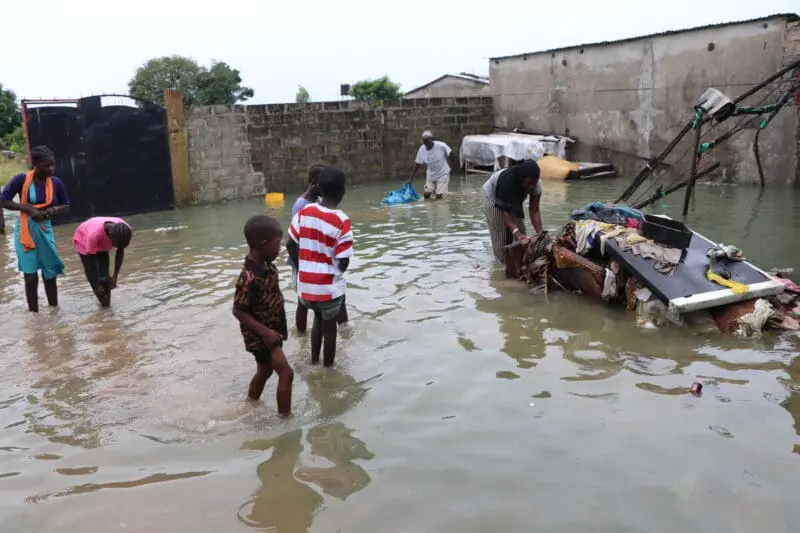
Oxford//-The United Nations World Food Programme (WFP), Oxford University Physics Department, IGAD Climate Prediction and Applications Centre (ICPAC), and various national forecasting and meteorology agencies across East Africa are joining forces to pioneer a transformative initiative that is revolutionising extreme weather forecasting and early warning systems in the region.
In East Africa, where deadly floods have succeeded the worst drought in decades, climate change is accelerating the frequency and severity of extreme weather events, and the need for precise and timely forecasts has never been more critical. In an era marked by escalating weather variability, accurate weather predictions are essential to safeguard lives and livelihoods.
Traditional weather forecasting models often fall short of accurately predicting extreme weather events, leaving vulnerable communities at risk. However, by harnessing the power of Artificial Intelligence (AI), we are bridging these critical gaps and setting a new standard for weather forecasting.
“I think we have the potential to change the world,” said Jesse Mason, Global Head of the Anticipatory Action Programme at WFP. “The World Food Programme has realised that we need to start protecting lives before they need saving. We need to make sure we’re acting ahead of extreme events, making sure that governments and communities have the tools to prepare and mitigate the impacts these are having on livelihoods and lives.”
“We have an opportunity to leverage the work that’s being going on at Oxford around AI and physics-based models to change the way we see hazards forming in countries and start to change the ways that humanitarians respond to predictable emergencies,” Mr Mason added.
Climate scientists at Oxford University Physics have developed a ground-breaking AI-based weather model that enhances the accuracy of rainfall forecasts, offering high-resolution predictions without the need for additional costly supercomputers.
“We believe the approach we have pioneered and are using here is a game-changer for parts of the world which have previously suffered from a lack of resources and infrastructure but find themselves bearing the brunt of climate change,” said Dr Shruti Nath, a climate scientist at Oxford University Physics.
“Through collaboration with ECMWF, the European Centre for Medium-Range Weather Forecasts, on our common understanding of physical atmospheric processes and the latest in AI and machine learning, we can supply state-of-the-art weather models to give more accurate and local predictions enabling particular countries and regions to better anticipate and prepare for extreme weather” Dr Nath added.
Accurate early warnings are a game-changer in disaster risk management. By providing more timely and reliable forecasts, governments and communities can take anticipatory actions that protect lives and livelihoods and mitigate the impacts of extreme weather events before they occur. This proactive approach is transforming humanitarian responses, shifting from reactive to preventative measures, ultimately saving more lives and reducing costs associated with disaster relief.
With its deep understanding of the challenges faced by those most affected by climate extremes, WFP is instrumental in ensuring that technological advancements reach and benefit those in need, so they can plan, prepare, and act proactively.
“This collaboration is a first of its kind for us, bringing scientific advances together with businesses, academia, and governmental and intergovernmental organisations to protect vulnerable populations’ lives, livelihoods, and food security ahead of extreme weather events,” commented Mr Mason.
This initiative was made possible with the support of Google.org to World Food Program USA, in support of WFP’s efforts to mitigate the impacts of climate change. The funding and in-kind contribution of computational resources from Google Cloud are crucial in overcoming the resource constraints faced by many forecasting organisations in Eastern Africa.
Hannah Wangari, Assistant Director at the Kenyan Meteorological Department (KMD), remarked, “At KMD, we are actively using these machine learning forecasts developed by Oxford University Physics to compare with our current operational methods. The results are promising and demonstrate significant improvements in accuracy.”
Collaboration with regional and local actors is at the heart of this project. National meteorological agencies, including the Kenya Meteorological Department and the Ethiopia Meteorological Institute (EMI), are integral partners, ensuring that the technology is tailored to the specific needs of their communities.
As the regional climate centre for Eastern Africa, ICPAC spearheads the capacity of its 11 member states in the region and offers the opportunity to scale cutting-edge technology in producing forecasts. By fostering local ownership and trust, this collaboration is building resilient systems that can effectively anticipate and respond to extreme weather events.
The success of this initiative in East Africa sets a precedent for broader application. The vision extends beyond this region, aiming to replicate this model in other parts of the world facing similar challenges. By continuing to refine AI-based models and expanding our partnerships, the goal is to build a more resilient global community capable of withstanding the worsening impacts of climate change. Video summary of the project: https://www.youtube.com/watch?v=l7OH8Oe_Ido&t=59s


